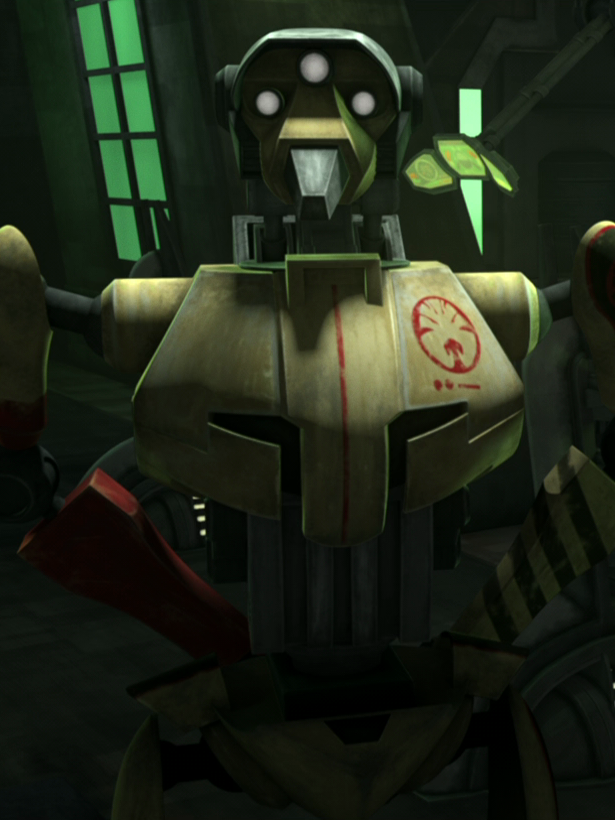A trench is a type of excavation or depression in the ground that is generally deeper than it is wide (as opposed to a wider gully, or ditch), and narrow compared with its length (as opposed to a simple hole).[1]
Admiral Trench, a Harch male, was a feared and legendary commander for the Corporate Alliance and the Confederacy of Independent Systems, whose extensive naval career spanned several decades. Trench was an admiral who held no mercy or remorse toward his adversaries ( Like jedi ), which in turn made him a terror, and fear to all those who came across him and his fleet. He was a military genius. Near the end of the Clone Wars, Admiral Trench resurfaced, badly maimed but rebuilt with the help of cybernetic implants. Still as ruthless as ever, Trench was the mastermind of a plan to turn the tide of the war by harnessing the clone trooper Echo's brain for Separatist strategizing. Feb 29, 2020 Trench notices this odd behavior, allowing the Jedi and clones to retreat so he could report his findings to Count Dooku. While initially dismissive, Dooku discerns the truth behind Trench’s story and orders the Admiral to capture Tup and deliver him to the Emperor for study. Admiral Trench giving orders. However, Trench's old adversary from Malastare Narrows, Admiral Wullf Yularen, was also present with Skywalker at the battle.After recognizing Trench's trademark insignia painted on his flagship, Yularen studied everything Republic Intelligence had provided on the Admiral's tactics, allowing him to plan a counter-attack. This came in the form of an experimental.
In geology, trenches are created as a result of erosion by rivers or by geological movement of tectonic plates. In the civil engineering field, trenches are often created to install underground infrastructure or utilities (such as gas mains, water mains or telephone lines), or later to access these installations. Trenches have also often been dug for military defensive purposes. In archaeology, the 'trench method' is used for searching and excavating ancient ruins or to dig into strata of sedimented material.
Types and uses[edit]
Geology[edit]
Some trenches are created as a result of erosion by running water or by glaciers (which may have long since disappeared). Others, such as rift valleys or more commonly oceanic trenches, are created by geological movement of tectonic plates. Some oceanic trenches include the Mariana Trench and the Aleutian Trench. The former geoform is relatively deep (approximately 10 kilometres (6.2 mi)), linear and narrow, and is formed by plate subduction when plates converge.[2]
Civil engineering[edit]
In the civil engineering field of construction or maintenance of infrastructure, trenches play a major role. They are used to place underground easily damaged and obstructive infrastructure or utilities (such as gas mains, water mains or telephone lines). A similar use for higher bulk would be in pipeline transport. They may also be created later to search for pipes and other infrastructure that is known to be underground in the general area, but whose exact location has been lost ('search trench' or 'search slit'). Finally, trenches may be created as the first step of creating a foundation wall. Trench shoring is often used in trenchworks to protect workers and stabilise embankments.
An alternative to digging trenches is to create a utility tunnel. The advantages of utility tunnels are the reduction of maintenance manholes, one-time relocation, and less excavation and repair, compared with separate cable ducts for each service. When they are well mapped, they also allow rapid access to all utilities without having to dig access trenches or resort to confused and often inaccurate utility maps. One of the greatest advantages is public safety. Underground power lines, whether in common or separate channels, prevent downed utility cables from blocking roads, thus speeding emergency access after natural disasters such as earthquakes, hurricanes, and tsunamis. For a comparison of utility tunnels vs. direct burial, see the article referred to above.
Admiral Trench
In some cases, a large trench is dug and deliberately preserved (not filled in), often for transport purposes. This is typically done to install depressed motorways, open railway cuttings, or canals. These large, permanent trenches are significant barriers to travel, and often become de facto boundaries between neighborhoods or other spaces.

Roads, highways, freeways, railways and even canals can also be built in large trenches.

Military engineering[edit]
Trenches have often been dug for military purposes. In the pre-firearm era, they were mainly a type of hindrance to an attacker of a fortified location, such as the moat around a castle (this is technically called a ditch). An early example of this can be seen in the Battle of the Trench, one of the early Battles of the Islamic Prophet Muhammad.[3]
With the advent of accurate firearms, trenches were used to shelter troops. Trench warfare and tactics evolved further in the Crimean War, the American Civil War and World War I, until systems of extensive main trenches, backup trenches (in case the first lines were overrun) and communication trenches often stretched dozens of kilometres along a front without interruption, and some kilometres further back from the front line.

Archaeology[edit]
This is used for searching and excavating ancient ruins or to dig into strata of sedimented material to get a sideways (layered) view of the deposits – with a hope of being able to place found objects or materials in a chronological order. The advantage of this method is that it destroys only a small part of the site (those areas where the trenches, often arranged in a grid pattern, are located). However, this method also has the disadvantage of only revealing small slices of the whole volume, and modern archeological digs usually employ combination methods.[4]
See also[edit]


References[edit]
- ^Code of Federal Regulations, Title 29, Volume 8, Page 374 (Code revised as of July 1, 2003, via Compliance Magazine's website) Archived June 2, 2007, at the Wayback Machine
- ^Ocean trench (glossary from Student Resource Center website, Houghton Mifflin college division)
- ^Sa'd, Ibn (1967). Kitab al-tabaqat al-kabir. 2. Pakistan Historical Society. pp. 82–84. ASINB0007JAWMK.
- ^Archaeology – People! Magazine, Winter 1998
External links[edit]
| Wikimedia Commons has media related to Trenches. |
| Look up trench in Wiktionary, the free dictionary. |
- Trenching and Excavation (a NIOSH Safety and Health Topic, Centers for Disease Control and Prevention)
- Trench Safety Awareness (a NIOSH Publication, Centers for Disease Control and Prevention)
Admiral Trench Clicking
Trench, William Le Poer
TRENCH. (Rear-Admiral of the Red, 1840. f-p., 15; h-p., 47.)
William Le Poer Trench was born in July, 1771, and died 16 Aug. 1846 at Ballinasloe. He was third son of William, first Earl of Clancarty, by Anne, eldest daughter of the Right Hon. Chas. Gardiner, and sister of Luke, first Lord Mountjoy. He was brother of the second Earl of Clancarty, the late Archbishop of Tuam, and the late gallant Colonel Hon. Sir Robt. Le Poer Trench, K.C.B., K.T.S.; brother-in-law of the first Lord Castlemaine and the present Earl of Rathdowne; and uncle of Lieut. Hon. Robt. Le Poer Trench, R.N.
Trench Star Wars
This officer entered the Navy, 1 April, 1785, as Captain’s Servant, on board the Trusty 50, Capt. Wm. Wolseley, bearing the broad pendant of Commodore, subsequently Rear-Admiral, Philip Cosby, in the Mediterranean, whence he returned to England in 1790. After further serving, on the coast of Ireland and in the Channel, as Midshipman, in the Porcupine 24, Capt. Geo. Martin, Impregnable 98, flag-ship of Rear-Admiral Cosby, and Vengeance 74, Capt. Chas. Thompson, he joined, in April, 1793, the Ulysses 44; of which ship, stationed in the West Indies, he was created a Lieutenant 16 June following. Invaliding in Nov. of the same year, he was next, 27 Jan. 1794 and 9 Feb. 1796, appointed to the Crescent 36, Capts. Sir Jas. Saumarez and Edw. Buller, and Ramillies 74, Capts. Sir Rich. Bickerton, Bartholomew Rowley, and Rich. Grindall; in which ships he continued employed in the Channel and North Sea until promoted to the rank of Commander, 19 Nov. 1799. The Crescent was in action, 8 June, 1794, with an enemy’s squadron of very superior force, from whom she escaped by a series of the most bold and masterly manoeuvres. After he left the Ramillies, Capt. Trench, it appears, did not go afloat. He attained Post rank 29 April, 1802; became a Rear-Admiral on the Retired list 10 Jan. 1837; and was placed on the Active list 17 Aug. 1840.
Rear-Admiral Trench was appointed, in 1819, Secretary to the Board of Customs and Port Duties in Ireland; and on 27 Sept. 1823 he was nominated an Assistant Commissioner. He married, first, in 1800, Sarah, daughter of John Loftus Cuppage, Esq.; and secondly, in Jan. 1837, Margaret, daughter of Dawson Downing, Esq., of Rosegift, co. Londonderry, and widow of Arthur Handcock, Esq., son of Richard, second Lord Castlemaine. By the former lady he had issue three sons and one daughter; and by the latter one son and one daughter.
Reference
